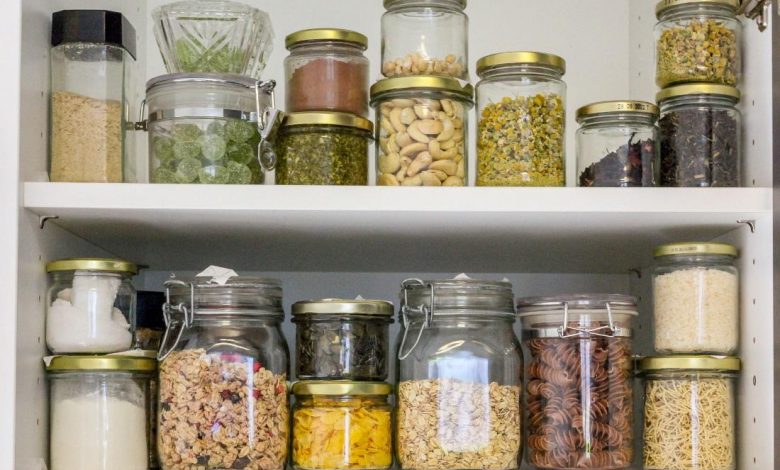
Stocking a Gluten-Free Kitchen
Pantry, fridge, and freezer staples to make gluten-free easier
Needing to eat gluten-free means that soon, you’re going to throw open your cupboard door and wonder what you need to remove and replace. Having scanned all the foods there to find the gluten-containing items (to donate them to a local food pantry), your shelves are going to look downright empty.
Sure, you noticed some boxes of crackers labeled gluten-free in that one aisle the last time you went grocery shopping, but crackers alone are not enough to stock your pantry. What you need is to refill those barren shelves with gluten-free staples, items you can readily eat or cook with safely, and this list is just the place to start.
The Basics
To start with, we should establish some good gluten-free snacks. Those can tide you over while you shop to fill the rest of the empty spaces in your kitchen.
A lot of healthy snacks are naturally gluten-free. As always, check your labels, but items such as dried fruit, rice cakes, and mixed nuts are all great options. Plain beef jerky (and some flavors—check those labels) is also a good, filling, protein-heavy quick snack that should stay in your cupboard if it’s something you like.
Venturing a bit further afield, many forms of chocolate are gluten-free. Oats are also naturally gluten-free; so, you can snack on granola bars—make sure they have a gluten-free label, though, to avoid cross-contamination.
If you prefer items you can pick up without worrying about gluten, check out Enjoy Life brand snacks. Enjoy Life makes many foods ranging from protein bars to brownie bites and all of their offerings are gluten-free. It’s a particularly good brand choice if you have other food sensitivities as they’re free of nuts, dairy, eggs, and a slew of other common allergens.
Another great, easy staple to keep on hand is gluten-free cereal. Many types of cereal are already gluten-free so start by checking the labels on your favorite cereal packages. Some popular gluten-free cereal options include rice Chex, cocoa pebbles, honey bunches of oats, and cheerios.
For Cooking and Baking
Living on snacks alone is far from the best option, plus eating dry snacks will get boring quickly. That means you need to get your pantry filled with gluten-free items that make for tasty, wholesome meals.
Oats are both a breakfast staple and a basic ingredient to make gluten-free treats like no-bake cookies. Though naturally gluten-free, this versatile grain is often processed in facilities that also process wheat, rye, or barley, so you’ll want to find oats that have the gluten-free label. Bob’s Red Mill is always a good choice.
Pasta is always a good staple to have on hand; simple to prepare and filling. While you can find gluten-free pasta options that mimic Italian classics, Asian-style pasta is already there for you. Rice noodles are naturally gluten-free, easy to prepare, and delicious.
Other gluten-free options include pasta made from lentils, vegetables, or mixes of non-gluten grains. A quick tip for preparing gluten-free pasta: use twice the amount of water you normally would. This will help the noodles to separate nicely rather than clumping up as they cook.
Beans are tasty, filling, come in a wide variety, and are excellent sources of protein and fiber, so get some cans on your shelves. Gluten-free chili night with corn chips is a great meal, whether for game night or a chilly winter evening.
Make sure you try out white and brown rice, quinoa, and other non-wheat grains to change up your diet. Any of these are quick and easy to add to steamed vegetables and grilled lean meat. Knowing which ones you like and having them on hand makes the mid-week dinner blahs easier to work through.
Of course, rice, veggies, and lean meat sound fairly dull. The best way to address that is to stock up on gluten-free spices. Good news! Most spices are naturally gluten-free!
Where you will need to be careful is in mixed spices such as ready-made BBQ rubs. Sometimes the anti-clumping ingredients can contain gluten. As always, check your labels.
Another simple way to change up your meals is in the condiments you use. While such items as mayonnaise, mustard, and ketchup are naturally gluten-free, they are prone to cross-contamination.
Given how little gluten it can take to set back your recovery (and comfort), it’s worth the time and effort to find condiments you know won’t be contaminated. While you should check all condiments for gluten, some to watch out for particularly include soy sauce, Worcestershire sauce, and pickles. Gluten sneaks in through processes of fermentation and pickling, so make sure the brands you choose use gluten-free preparation methods.
Other staples for meal prep include gluten-free muffin and pancake mixes or if you prefer to make your batter from scratch, gluten-free flour. Picking and using gluten-free flours can be complex, but we have deep dives into the topic here and here.
In the Freezer
The freezer holds onto things we want to keep on hand long-term. Anything you pull out of it should be gluten-free so you can skip even thinking about the ingredients you choose.
By and large, meat is going to be completely gluten-free. That said, if you opt for self-saucing meats or pre-seasoned meat, you will need to check for gluten. Anything with a gravy or sauce should be suspect until proven otherwise since gluten is regularly used as a thickener.
Double-check any frozen treats to be sure they are clear of any traces of gluten. While a basic ice cream recipe is gluten-free, not all companies stick to basic recipes. Be particularly careful of ice cream with mix-in ingredients or ice cream bars—mix-ins should be gluten-free themselves, and ice cream bars often contain stabilizers with gluten in them. Sticking with treats labeled gluten-free is a good way to avoid this headache, besides being a great excuse to try out Ben & Jerry’s growing gluten-free ice cream line.
Keep plenty of frozen vegetables and fruit in the freezer as a quick go-to for sides or for a snack. Well-seasoned cauliflower or pea soup are delicious, and if you have yet to try making your own fruit smoothies, now is a great time. Frozen fruit mixed with plain yogurt, orange juice, and some flax or chia is a delicious breakfast with a good amount of healthy nutrients, including fiber, protein, and vitamins.
You’re Set
Mission accomplished: you have a pantry ready to sustain a gluten-free diet. Though we covered food here, there are more steps you can take in your home to prevent gluten contamination. You can read about it here[a] and see which steps will best help you. With all of this in place, it will be simpler to experiment with your new eating style, find new favorites, and continue your road to recovery.
If you’re gluten free you’ll love these gluten free oreos.
Sources:
https://www.glutenfreeliving.com/gluten-free-foods/shopping-gluten-free/12-pantry-essentials-for-a-gluten-free-kitchen/
https://www.whattheforkfoodblog.com/2017/01/08/gluten-free-pantry-staples/
https://eatmikeys.com/blogs/blog/gluten-free-pantry-staples-shopping-list
https://www.delish.com/cooking/g19422633/gluten-free-cereal/
[a]Hyperlink to blog 7













